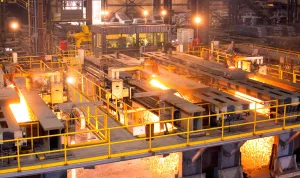How Seasonal Changes Influence Steel Prices in Hong Kong: Key Insights for Buyers and Suppliers

Steel prices in Hong Kong, like in many other markets, are influenced by a range of factors, and one of the most overlooked yet significant variables is seasonal changes. Understanding how weather patterns and seasons affect the steel industry can help buyers, suppliers, and investors make informed decisions. This article dives deep into the seasonal factors impacting steel prices in Hong Kong and provides valuable insights for businesses looking to optimize their strategies.
How Seasonal Changes Affect Steel Demand and Supply in Hong Kong
1. Construction Activity & Climate Dependency
- Summer (Wet Season – May to September): Hong Kong experiences heavy rainfall and high humidity during the summer months, which often leads to a slowdown in construction activities. Delays in major construction projects reduce the immediate demand for steel, causing a dip in steel prices during this period. The steel that is already in stock tends to sit longer, driving prices lower due to decreased demand.
- Winter (Dry Season – November to February): The cooler and drier months see an uptick in construction projects due to more favorable working conditions. This increased construction activity drives up the demand for steel, subsequently pushing prices higher. The winter season is often a peak time for infrastructure development, making it a period where steel prices are generally at their highest.
2. Inventory Management
- Seasonal changes also affect how steel suppliers in Hong Kong manage their inventories. During monsoon seasons, steel traders may opt to maintain lower inventories to avoid corrosion and damage from high humidity and water exposure. This creates a reduced supply in the market, potentially leading to price hikes even if demand remains stable.
- Conversely, in drier months, suppliers are more comfortable maintaining higher inventories, knowing that the risk of rust and corrosion is minimized. This higher availability helps stabilize or lower steel prices, especially when demand doesn’t match the increased stock.
3. Transportation Disruptions
- The typhoon season, which typically lasts from May to November, can cause major disruptions in Hong Kong’s transportation and logistics. Steel shipments may be delayed, and ports can be temporarily shut down due to severe weather conditions. These disruptions tighten supply chains, often driving up steel prices as a result of reduced availability and delivery delays.
- In contrast, during stable weather periods (typically from November to April), transportation is more reliable, and logistical challenges are minimized. This tends to stabilize the steel market, making prices more predictable during this time.
Global Market Trends vs. Local Seasonality
While global steel prices are influenced by factors like international demand, raw material costs, and geopolitical tensions, local factors, including seasonal changes, can create unique price movements specific to Hong Kong.
1. Global Steel Production Cycles
- Global steel production usually peaks in the first and third quarters of the year, coinciding with lower construction activity in Hong Kong’s summer season. As global supply rises and local demand drops, steel prices in Hong Kong tend to dip. However, in the latter half of the year, when global production slows and Hong Kong’s construction projects ramp up, steel prices tend to increase.
2. Raw Material Imports
- Hong Kong relies heavily on imported raw materials for steel production. If global supply chains experience delays during the typhoon or monsoon season, the cost of imported materials can rise, leading to increased steel prices. Conversely, smoother shipping conditions in dry months help keep import costs lower, benefiting buyers in terms of stable or reduced prices.
How to Navigate Steel Price Fluctuations in Hong Kong
1. Plan Purchases Around Seasonal Trends
- Businesses looking to optimize steel costs should plan their purchases based on the predictable patterns of seasonal price fluctuations. Buying steel during the wet season (summer), when prices tend to be lower due to reduced demand, can offer significant cost savings. Conversely, suppliers should increase their inventories before the winter, anticipating higher demand and higher prices.
2. Consider Hedging and Long-Term Contracts
- For businesses and construction firms that need steel throughout the year, entering into long-term contracts with suppliers can help stabilize prices despite seasonal volatility. Hedging strategies can also be useful, allowing companies to lock in prices during low seasons to avoid spikes during high-demand periods.
3. Monitor Global and Local Market Conditions
- Although seasonal changes in Hong Kong significantly affect steel prices, businesses should also monitor global steel trends. Factors like international production slowdowns, trade tariffs, or raw material shortages can amplify seasonal price changes locally.
Conclusion: Understanding Seasonal Impacts to Make Better Decisions
Seasonal changes play a crucial role in influencing steel prices in Hong Kong. The wet summer season typically sees a drop in demand and prices, while the dry winter months bring higher demand and rising prices. By understanding these trends, businesses and suppliers can strategically plan their steel purchases and sales, minimizing costs and maximizing profitability.
Whether you’re a buyer looking to optimize costs or a supplier aiming to manage inventories effectively, factoring in seasonal fluctuations can help you make smarter decisions in the Hong Kong steel market.



